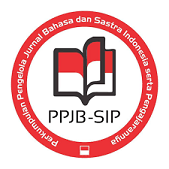Analisis Perbandingan Unsur Intrinsik Siswa di Kelas IX SMP Negeri 3 Singaraja Berdasarkan Jenis Kelamin
DOI:
https://doi.org/10.23887/jjpbs.v7i2.12011Abstract
Penelitian ini dilakukan di SMP Negeri 3 Singaraja. Penelitian ini bertujuan untuk (1) mengetahui perbandingan unsur instrinsik yang digunakan oleh siswa di kelas IX di SMP Negeri 3 Singaraja dalam menulis cerpen berdasarkan jenis kelamin, (2) mengetahui perbedaan cerpen siswa berdasarkan jenis kelamin di kelas IX SMP Negeri 3 Singaraja. Penelitian ini merupakan penelitian deskriptif kualitatif. Subjek dalam penelitian ini siswa sedangkan objeknya yakni cerpen siswa, jenis kelamin dan unsure intrinsic cerpen. Penelitian ini menggunakan metode pengumpulan data berupa dokumentasi dan instrument penelitian menggunakan kartu data. Hasil penelitian ini menunjukan tema yang digunakan oleh siswa perempuan cenderung mengarah pada tema tingkat egoik sedangkan siswa laki-laki cenderung menggunakan tema tingkat sosial. Gaya bahasa yang cenderung digunakan oleh siswa perempuan adalah hiperbola, sedangkan siswa laki-laki tidak memiliki kecenderungan dalam menggunakan gaya bahasa. Siswa laki-laki lebih banyak menggunakan bahasa biasa daripada gaya bahasa. Bentuk tulisan yang digunakan oleh siswa perempuan adalah bentuk tulisan narasi-dialog, sedangkan siswa laki-laki cenderung menggunakan narasi. Berdasarkan hasil penelitian, dapat disimpulkan bahwa ada perbedaan-perbedaan antara siswa perempuan dan laki-laki dalam menulis karya sastra berupa cerpen. Hal tersebut dapat dilihat dari perbedaan tema, gaya bahasa, dan bentuk tulisan yang digunakan dalam menulis cerpen.Kata Kunci : cerpen siswa, jenis kelamin, tema, gaya bahasa, bentuk tulisan
This study conducted at SMP Negeri 3 Singaraja. This study aimed to (1) find out the comparison of instrinsic element used by the IX class at SMP Negeri 3 Singaraja in writing short story based on the sex of the students, (2) to know the different of students’ short story based to the sex in IX class at SMP Negeri 3 Singaraja. This study was a descriptive qualitative study. The subject of this study was the students while the objects were the short story, sex of the students’, and instrinsic element. This study used data collection method in the form of documentation and research instrument using data card. The results of this study shown the theme used by female students tend to use the theme of ego level while male students tend to use the theme of social level. The language style tends to be used by female students was hyperbole, whereas male students have no tendency to use language style. The male students more used common language than the style of language. The form of writing used by female students was a form of narrative-dialogue writing, while male students tend to use narration. Based on the results of the study, it can be concluded that there were differences between female and male students in writing literature in the form of short stories. It can be seen from the differences in theme, language style, and form of writing used in writing short stories.
keyword : Short stories of students, Sex of the students, Theme, language style, Form of writing
Published
2017-10-11
Issue
Section
Articles
License
Authors who publish with the Jurnal Pendidikan Bahasa dan Sastra Indonesia Undiksha agree to the following terms:- Authors retain copyright and grant the journal the right of first publication with the work simultaneously licensed under a Creative Commons Attribution License (CC BY-SA 4.0) that allows others to share the work with an acknowledgment of the work's authorship and initial publication in this journal
- Authors are able to enter into separate, additional contractual arrangements for the non-exclusive distribution of the journal's published version of the work (e.g., post it to an institutional repository or publish it in a book), with an acknowledgment of its initial publication in this journal.
- Authors are permitted and encouraged to post their work online (e.g., in institutional repositories or on their website) prior to and during the submission process, as it can lead to productive exchanges, as well as earlier and greater citation of published work. (See The Effect of Open Access)







